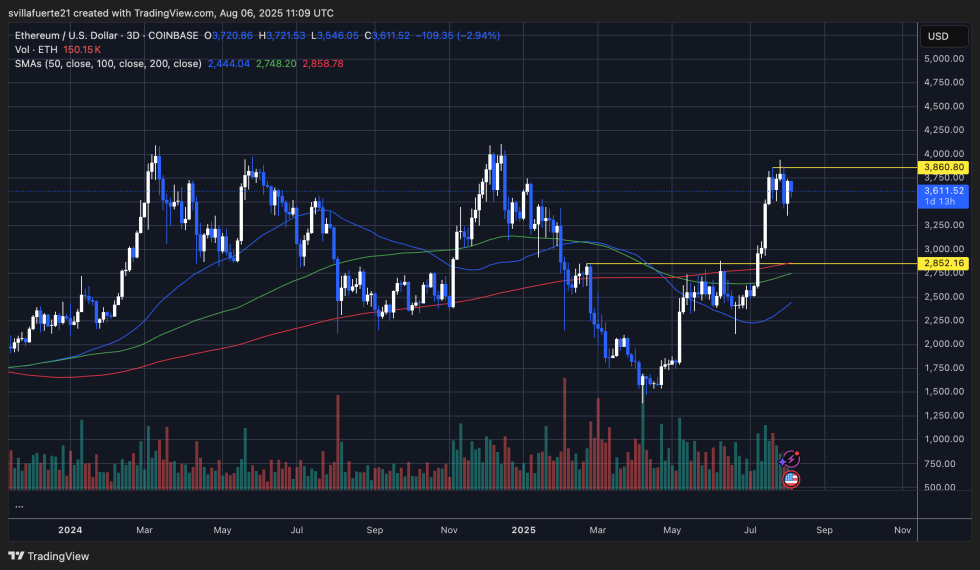Base, the Ethereum Layer-2 solution developed by Coinbase, experienced a 33-minute network disruption that halted block production on its Mainnet. The outage occurred on August 5, 2025, and was caused by unexpected on-chain congestion combined with an unprepared backup sequencer. While Base is designed with high availability in mind—featuring multiple sequencer instances managed by Conductor (an OP Stack component)—a critical handoff failure required manual intervention to resume operations.
This event sparked immediate fear and speculation across the crypto community. Investors and users began to question the sustainability of the network, especially as Layer-2 scaling solutions are expected to offer seamless, reliable performance. The incident highlighted potential vulnerabilities in the sequencer infrastructure, casting doubt on whether Base can maintain uptime and stability during periods of high demand.
As trust in the network was momentarily shaken, critics pointed to the risks of centralized sequencer management, while supporters emphasized that the quick response prevented a longer disruption. Nonetheless, the reputational impact has raised concerns for both institutional users and DeFi projects considering the network for deployment. The coming weeks will be critical as they address these concerns and work to restore confidence in the network.
Base Outlines Root Cause And Fixes Network Outage
Following the recent 33-minute network disruption, Base published a detailed postmortem report explaining the technical root cause and the mitigation steps taken to restore the network. The issue stemmed from a sequencer handoff failure within the system’s High Availability (HA) cluster, which is managed by Conductor, an OP Stack component designed to maintain uptime and minimize single points of failure.
At 6:07am UTC, the active sequencer started lagging behind due to intense on-chain activity. Conductor, functioning as intended, initiated an automated handoff to a new sequencer. However, the new sequencer was still being provisioned and wasn’t yet ready to produce blocks. Typically, if a newly elected sequencer is unhealthy, Conductor would perform another handoff. Unfortunately, since Conductor wasn’t fully operational on this sequencer, it couldn’t initiate another transfer.
By 6:09am UTC, monitoring systems flagged the issue, and the Base team was paged. At 6:12am UTC, the incident was officially declared. To mitigate the issue, Base engineers paused Conductor’s HA software to stop further faulty leadership transfers and manually elected a healthy sequencer. By 6:40am UTC, the network had resumed normal operations.
To prevent future incidents, Base is working on updating its infrastructure to ensure that any sequencer added to the cluster is always capable of leadership transfer if elected. Additionally, the team is enhancing testing protocols to validate these fixes before deployment. These measures are aimed at bolstering Base’s system robustness and avoiding similar disruptions in the future.
Ethereum Price Action Reflects Market Caution
Ethereum (ETH) is currently trading at $3,611.52 after experiencing a sharp decline from its recent local high of $3,940. The price is struggling to regain bullish momentum, failing to hold above the $3,700 resistance zone. This chart shows that ETH has entered a consolidation phase after its aggressive rally from $2,852.16, which remains a key support level in case of further downside.
The 50-day moving average (blue line) is acting as dynamic resistance around the $3,640 zone, while the 100-day (green line) and 200-day (red line) moving averages are still positioned below the price, reflecting a broader bullish trend. However, the recent rejection near the $3,860.80 level indicates that bulls are losing control in the short term.
While Base itself doesn’t have a native token, its performance is closely tied to Ethereum’s Layer-2 ecosystem narrative. Investors are now watching closely to see if ETH can stabilize above $3,600, as any further weakness could amplify doubts about the broader L2 market.
Featured image from Dall-E, chart from TradingView

